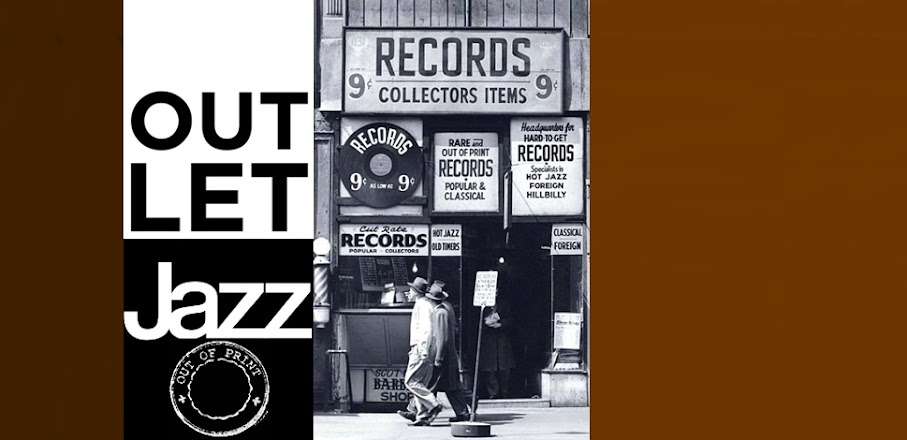The Trombones Inc.
Jazz has been the scene of a battle of sorts for some time now. Though semantics have generally been the weapons, musicians in the east have traveled their own route and have cast a disparaging eye on the goings on of their colleagues on the Pacific. The latter similarly have come to be identified with a movement sometimes known as "the west coast school of jazz", which they in turn consider superior to the work of musicians in the east. All to the travail of you the listener. This melange has somewhat been abated by various west coast and east coast albums, but no recorded panacea existed to settle the argument once and for all.
The idea of doing an album in which both schools of jazz were heard goes back to a part-time valve trombonist named Jim Conkling who, it might be added, had the idea once before. This reformed cornet player has been in the habit lately of doubling as president of large record companies, first Columbia Records and now Warner Bros., and having instigated the first homage to the seventh position — "Jai & Kai Plus Six" on Columbia — he thought it might be fun to have twenty trombonists do battle, coast-to-coast. The fact that only ten trombonists from each coast would blow at one time helped the mind cope with this proposition, and accordingly, plans were drafted to make this mad, mad project come true. Come true it did, but gloriously. *George Avakian (liner notes)*
If our arithmetic is correct, 27 trombonists participated in the making of this disc— divided into two groups, one on the west coast, the other on the east, and subdivided further by substitutions. The product is (a) a veritable Who’s Who of modern jazz trombone players, (b) a remarkable exercise in virtuosity for arrangers Johnson, Paich and Barker, (c) a revelation of the richness of trombone, and (d), some sort of apex in the career of the trombone itself.
There are 15th century paintings that show the instrument largely as it is today. But is wasn't until the early 19th century that composers, including Berlioz, began to explore its possibilities. And it remained for the jazz musicians of 20th century America to find out what trombones could really do. If you doubt that, listen to any average symphony trombonist struggling through the solo in Ravel's Bolero, even today.
This record is a great tribute to the skill and authority jazz musicians developed on the instrument. It is perhaps impossible to sort out the individual performances on this disc to cite them for merit, but solos and ensemble work are due for high praise. It is safe to say that no instrument but trombone has the variety of colors to permit a recording like this. So enormous are the possibilities of trombone, and so well have Paich, Barker and Johnson exploited them, that you rarely miss the other sections, rarely realize that you're hearing trombones, only trombones, and nothing but trombones (except for that tuba Paich snuck in for three tracks).
The Harvard Dictionary of Music says that "since the movement from position to position requires a certain amount of time, a true legato is not possible on the trombone". Its editor had better hear this disc before the next edition is prepared. *Down Beat, July 9, 1959 [5 stars]*
1 - Neckbones
(J. J. Johnson)
2 - Dues Blues
(J. J. Johnson)
3 - Long Before I Knew You
(Jule Styne, Sammy Cahn)
4 - Soft Winds
(Benny Goodman)
5 - Tee Jay
(J. J. Johnson)
6 - Lassus Trombone
(Henry Fillmore)
7 - It's All Right With Me
(Cole Porter)
8 - Polka Dots And Moonbeams
(Johnny Burke, Jimmy Van Heusen)
9 - Old Devil Moon
(Burton Lane, E.Y. Harburg)
10 - Impossible
(Steve Allen)
11 - Heat Wave
(Irving Berlin)
#1:
Frank Rehak, Jimmy Cleveland, Eddie Bert, Benny Powell,
Bob Brookmeyer, Melba Liston, Henry Coker, Benny Green (trombones);
Dick Hickson, Bart Varsalona (bass trombones);
Hank Jones (piano); Wendell Marshall (bass); Osie Johnson (drums).
Recorded in New York City, December 26, 1958
#2, #4:
Frank Rehak, Jimmy Cleveland, Eddie Bert, Benny Powell,
Bob Brookmeyer, Melba Liston, Bob Alexander, Benny Green (trombones);
Dick Hickson, Bart Varsalona (bass trombones);
Hank Jones (piano); Milt Hinton (bass); Osie Johnson (drums).
Recorded in New York City, December 29, 1958
#3, #5:
Eddie Bert, Jimmy Cleveland, Henry Coker,
Melba Liston, Benny Powell, Frank Rehak (trombones);
Bob Brookmeyer (valve trombone); Dick Hixson, Bart Varsalona (bass trombones);
Hank Jones (piano); Milt Hinton (bass); Osie Johnson (drums).
Recorded in New York City, December 31, 1958
#6, #9, #10:
Joe Howard, Herbie Harper, Frank Rosolino, Dick Nash, Ed Kusby,
Tommy Pederson, Murray McEachern, Marshall Cram (trombones);
George Roberts, Kenny Shroyer (bass trombones); Marty Paich (piano);
Barney Kessel (guitar); Red Mitchell (bass); Mel Lewis (drums); Mike Pacheco (bongos).
Recorded in Los Angeles, California, December 5, 1958
#7, #8, #11:
Bob Enevoldsen, Milt Bernhardt, Bob Fitzpatrick, Joe Howard,
Lewis McCreary, Frank Rosolino, Dave Wells (trombones);
George Roberts (bass trombone), Stu Williamson (valve trombone);
John Kitzmiller (tuba); Marty Paich (piano); Red Mitchell (bass); Mel Lewis (drums).
Recorded in Los Angeles, California, December 3, 1958
Arranged by J. J. Johnson (#1 to #5), Warren Barker (#6, #9, #10) and Marty Paich (#7, #8, #11)


https://1fichier.com/?j8se2n3xq9vvt6snri5b
ReplyDeleteMuchas gracias,
ReplyDelete